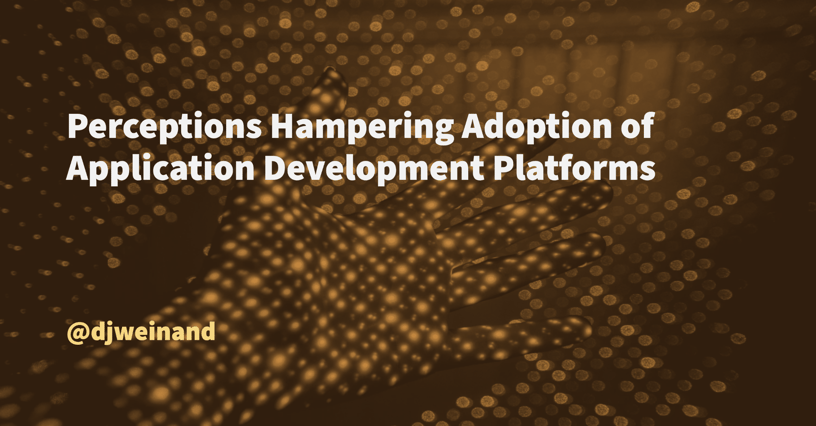Our research shows that while application development platforms from enterprise solution providers are growing in prominence, there are many perceptions about their value that need to be overcome.

Part Two of Three-Part Series
In our first blog, we detailed the technological advancements that created a strong environment for independent software vendors (ISVs) and systems integrators (SIs) using application development platforms (ADPs). While this environment is as good as it’s been, there are still friction points (real and perceived) that have inhibited broader adoption.
Digital transformation for businesses has been defined as table stakes for companies that want to stay ahead of their competition and remain relevant. For ISVs and SIs, this has meant tremendous opportunity. While cloud computing has simplified many aspects of development and deployment, digital disruption has added high complexity as well. No longer are applications the purview of IT. ISVs and SIs must cater to and understand the entire enterprise and its players. Though promise of digital is to enable a level of interconnectedness (using technology) that was previously unavailable, the complexity of delivering on that promise is far more difficult.
As ISVs and SIs adapt to this new development environment, they face both legacy challenges as well as new ones. These include:
- Inflexibility in selection of desired infrastructure and environment setup
- Non-standardized documentation that triggers difficulty in tracking development, monitoring processes and, training new employees
- Non-uniform execution and unavailable SOPs for project management
- Absence of thorough and continuous testing (both manual and automated) during each stage of the application development process
- Lack of defined change management processes that leads to high operational risks
- Lack of cross-team collaboration tools and real-time visibility in applications
These challenges have firms looking for ways to better solve them, both internally and through partnerships. A smart business move on the part of many enterprise solution providers is to build out (or acquire) application development platforms (ADP’s) to help ISVs and SIs with tools to adapt to today’s complex business environments. In specific industries, such as IoT, these platforms have served to be an excellent resource for partners, while in others, adoption has been lacking. Higher education is required of the development community as there remain many concerns around joining such a platform. Based on recent research conducted by insights firm Incisiv, application development platform adoption is hampered by the following perceptions:
- Data security:
- Data security is a primary concern for software developers as any loss of data can create legal issues or developmental delays.
- Overly stringent requirements on using authorized APIs and security controls at each step of the application development process can lead to delays.
- Longer development cycles:
- The cost of delays is precise. ISVs and SIs perceive cycles inside an ADP to be longer.
- Higher costs:
- Even though such platforms offer the latest tools (e.g., low code/no code), many perceive the cost to develop on platforms is higher.
- Complex migration to cloud-based tech:
- While this is table stakes for most ISVs and SIs, migration to cloud-based technologies requires new processes and controls, and some are not ready to make the jump.
- Competitive friction:
- Some ISVs stated they are apprehensive about sharing a platform with competitors, thereby hurting their chances at new customer acquisition.
In an environment where there is no doubt opportunity, ISVs and SIs must learn to navigate the enhanced business complexity that can hamper such an opportunity. It involves leveraging every possible tool at a company’s disposal, and that includes application development platforms from enterprise solution providers. These providers, however, have to educate the ISVs and SIs ecosystem on the benefits of such a platform. We’ll cover that in our final blog in the series.
For access to the research that fueled this blog, click here.





